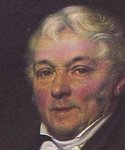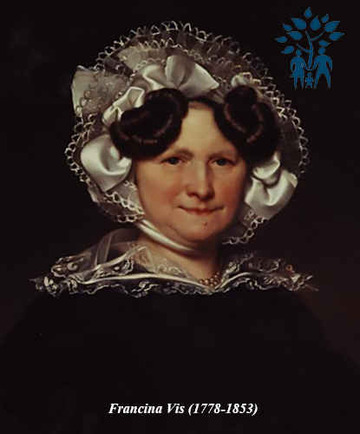Database Schaap » Emelie Marie Dorothee Labouchere (1848-1936)
Personal data Emelie Marie Dorothee Labouchere
- She was born on March 2, 1848 in Rotterdam, Zuid-Holland, Nederland.
- She died on February 9, 1936 in Rozendaal, Gelderland, Nederland, she was 87 years old.
- A child of Francios Antoine Labouchere and Johanna Hudig
- This information was last updated on June 20, 2014.
The author of this publication has the consent of the person concerned (if still alive) for the publication of the data.
Household of Emelie Marie Dorothee Labouchere
She is married to Andreas Hegelund Brandt.
They got married
Timeline Emelie Marie Dorothee Labouchere
This functionality is only available in Javascript supporting browsers.
Click on the names for more info.
Symbols used:  grandparents
grandparents
 parents
parents
 brothers/sisters
brothers/sisters
 children
children
 grandparents
grandparents
 parents
parents
 brothers/sisters
brothers/sisters
 children
children
Ancestors (and descendant) of Emelie Marie Dorothee Labouchere
The data shown has no sources.
Matches in other publications
This person also appears in the publication:Historical events
Birthday March 2, 1848
- The temperature on March 2, 1848 was about 5.0 °C. Wind direction mainly south. Weather type: betrokken. Source: KNMI
- This page is only available in Dutch.De Republiek der Verenigde Nederlanden werd in 1794-1795 door de Fransen veroverd onder leiding van bevelhebber Charles Pichegru (geholpen door de Nederlander Herman Willem Daendels); de verovering werd vergemakkelijkt door het dichtvriezen van de Waterlinie; Willem V moest op 18 januari 1795 uitwijken naar Engeland (en van daaruit in 1801 naar Duitsland); de patriotten namen de macht over van de aristocratische regenten en proclameerden de Bataafsche Republiek; op 16 mei 1795 werd het Haags Verdrag gesloten, waarmee ons land een vazalstaat werd van Frankrijk; in 3.1796 kwam er een Nationale Vergadering; in 1798 pleegde Daendels een staatsgreep, die de unitarissen aan de macht bracht; er kwam een nieuwe grondwet, die een Vertegenwoordigend Lichaam (met een Eerste en Tweede Kamer) instelde en als regering een Directoire; in 1799 sloeg Daendels bij Castricum een Brits-Russische invasie af; in 1801 kwam er een nieuwe grondwet; bij de Vrede van Amiens (1802) kreeg ons land van Engeland zijn koloniën terug (behalve Ceylon); na de grondwetswijziging van 1805 kwam er een raadpensionaris als eenhoofdig gezag, namelijk Rutger Jan Schimmelpenninck (van 31 oktober 1761 tot 25 maart 1825).
- From November 21, 1848 till November 1, 1849 the Netherlands had a cabinet De Kempenaer - Donker Curtius with the prime ministers Mr. J.M. de Kempenaer (conservatief-liberaal) and Mr. D. Donker Curtius (conservatief-liberaal).
- In the year 1848: Source: Wikipedia
- The Netherlands had about 3.1 million citizens.
- February 2 » Mexican–American War: The Treaty of Guadalupe Hidalgo is signed.
- March 20 » German revolutions of 1848–49: King Ludwig I of Bavaria abdicates.
- May 19 » Mexican–American War: Mexico ratifies the Treaty of Guadalupe Hidalgo thus ending the war and ceding California, Nevada, Utah and parts of four other modern-day U.S. states to the United States for US$15million.
- May 22 » Slavery is abolished in Martinique.
- August 18 » Camila O'Gorman and Ladislao Gutierrez are executed on the orders of Argentine dictator Juan Manuel de Rosas.
- December 2 » Franz Joseph I becomes Emperor of Austria.
Day of death February 9, 1936
- The temperature on February 9, 1936 was between -5.4 °C and 4.7 °C and averaged -0.6 °C. There was 4.5 hours of sunshine (47%). The average windspeed was 3 Bft (moderate breeze) and was prevailing from the east-northeast. Source: KNMI
- Koningin Wilhelmina (Huis van Oranje-Nassau) was from 1890 till 1948 sovereign of the Netherlands (also known as Koninkrijk der Nederlanden)
- In The Netherlands , there was from July 31, 1935 to June 24, 1937 the cabinet Colijn III, with Dr. H. Colijn (ARP) as prime minister.
- In the year 1936: Source: Wikipedia
- The Netherlands had about 8.5 million citizens.
- February 10 » Second Italo-Abyssinian War: Italian troops launched the Battle of Amba Aradam against Ethiopian defenders.
- April 6 » Tupelo–Gainesville tornado outbreak: Another tornado from the same storm system as the Tupelo tornado hits Gainesville, Georgia, killing 203.
- May 9 » Italy formally annexes Ethiopia after taking the capital Addis Ababa on May 5.
- July 22 » Spanish Civil War: The Popular Executive Committee of Valencia takes power in the Valencian Community.
- August 1 » The Olympics opened in Berlin with a ceremony presided over by Adolf Hitler.
- August 24 » The Australian Antarctic Territory is created.
Same birth/death day
- 1836 » Henry Billings Brown, American lawyer and judge († 1913)
- 1842 » Carl Jacobsen, Danish brewer, art collector, and philanthropist († 1914)
- 1846 » Marie Roze, French soprano († 1926)
- 1849 » Robert Means Thompson, American commander, lawyer, and businessman († 1930)
- 1859 » Sholem Aleichem, Ukrainian-American author and playwright († 1916)
- 1860 » Susanna M. Salter, American activist and politician († 1961)
- 1928 » William Gillies, Australian politician, 21st Premier of Queensland (b. 1868)
- 1930 » Richard With, Norwegian captain and businessman, founded Hurtigruten (b. 1846)
- 1932 » A.K. Golam Jilani, Bangladeshi soldier and activist (b. 1904)
- 1932 » Junnosuke Inoue, Japanese businessman and banker (b. 1869)
- 1945 » Ella D. Barrier, American educator (b. 1852)
- 1950 » Ted Theodore, Australian politician, 20th Premier of Queensland (b. 1884)
About the surname Labouchere
- View the information that Genealogie Online has about the surname Labouchere.
- Check the information Open Archives has about Labouchere.
- Check the Wie (onder)zoekt wie? register to see who is (re)searching Labouchere.
The Database Schaap publication was prepared by Leen Schaap.
When copying data from this family tree, please include a reference to the origin:
Leen Schaap, "Database Schaap", database, Genealogy Online (https://www.genealogieonline.nl/database-schaap/I4368.php : accessed December 25, 2025), "Emelie Marie Dorothee Labouchere (1848-1936)".
Leen Schaap, "Database Schaap", database, Genealogy Online (https://www.genealogieonline.nl/database-schaap/I4368.php : accessed December 25, 2025), "Emelie Marie Dorothee Labouchere (1848-1936)".

